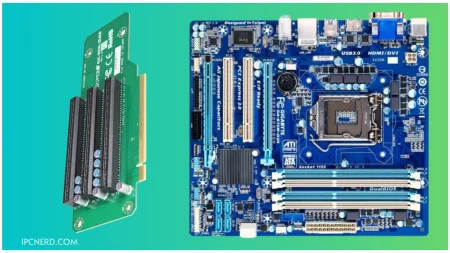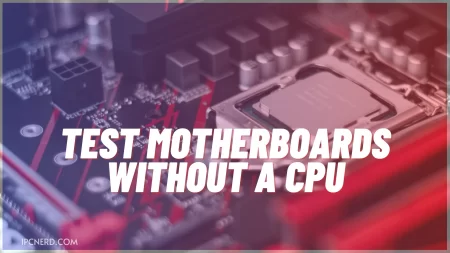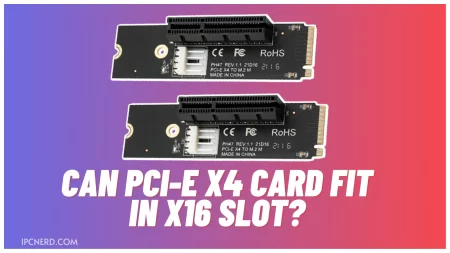One of the most common upgrades you’ll make to your PC. There are many cases on the market, but not all cases are meant to fit in with every budget and space requirement.
That’s where this article comes in! We’ll show you how to upgrade to a new PC case and what features to look for when making your purchase so that it fits in with your needs.
Why Upgrade to a New PC Case?

Are you looking for a reason to upgrade to a new PC case? Here are several reasons why upgrading to a new PC case can be beneficial:
1. Aesthetics – If you’re tired of how your current PC looks, then upgrading to a new case can give it a fresh appearance. There are many different styles of cases available, so you’re sure to find one that suits your taste.
2. Functionality – A new PC case can offer improved functionality over your old one. For example, some cases come with built-in fan controllers or cable management features to help keep your system tidy and running smoothly.
3. Performance – In some cases, upgrading to a newer, more modern PC case can improve your system’s performance. This is due to better airflow and cooling potential offered by newer case designs.
4. Protection – A new PC case can better protect your components than an older one. This is especially important if you plan on transporting your system frequently.
5. Value – Even if you don’t care about any of the other benefits of upgrading to a new PC case, the fact is that it can often be quite affordable. This makes it an excellent way to add value to your system without breaking the bank.
Where Can You Buy The Right PC Case For You?
There are a few things to consider when purchasing a new PC case. First, decide what size case you need. Full towers are the largest and most expensive option, followed by mid-towers, which are smaller and less expensive.
Next, decide what style of case you want. Do you want a window case to see your computer’s internals? Or do you prefer a solid case that won’t show off your components? Lastly, think about what features you need.
Do you want a good airflow case, so your components don’t overheat? Or do you need much storage space for hard and optical drives? Once you’ve considered all of these factors, you’ll be able to narrow down your choices and find the perfect PC case for your needs.
What Features Should You Look Out For In A New PC Case?
When you’re looking for a new PC case, there are several features you should keep in mind. First and foremost, you’ll want to ensure the case is large enough to accommodate all of your components.
You’ll also want to pay attention to the case’s cooling system, which will keep your components running at peak performance.
Additionally, you should consider the case’s aesthetics and whether it will fit in with the rest of your setup. Lastly, you’ll want to ensure that the case has all the necessary ports and connectors for your needs.
What to Consider When Buying a New PC Case
Size and compatibility are the two most important things to remember when looking for a new PC case.
Make sure the case you choose will fit all your components, including any expansion cards and optical drives you may have. It’s also important to check that the case is compatible with your motherboard and power supply.
You’ll also want to consider cooling when selecting a new PC case. If you’re planning on overclocking your CPU or GPU, or if you want to keep your system as cool as possible, look for a case with good airflow and plenty of room for fans.
Lastly, take aesthetics into account when choosing your new PC case. If you want your system to look its best, pick a case that matches your style.
How to install a new PC case
Installing it is straightforward when you’re ready for a new PC case. Here’s a step-by-step guide on how to do it:
1. Remove the old case: Unscrew the screws holding the old case in place, then carefully remove them from the components inside. Be careful not to damage any sensitive parts like the motherboard or graphics card.
2. Install the new case: Place the new case on top of the existing components and screw it in place. Make sure that all of the cables are properly routed through the new case so that they’re not pinched or damaged.
3. Connect everything up: Once the new case is in place, reconnect all the cables and components previously attached to the old case. This includes power cables, data cables, and any installed cooling fans.
4. Test it out: Before putting everything back together, ensure everything is working properly by powering the PC and testing all the connections. If everything seems to be working fine, then you can go ahead and reassemble your PC.
That’s all there is to it! Installing a new PC case is a relatively simple task that anyone can do with just a few tools and patience. With a little care, you can easily upgrade to a new case without any problems.
Tips for Purchasing a New PC Case
If you want to upgrade your PC case, you should keep a few things in mind. First, consider what size case you need. Full-tower cases are the largest and most expensive, followed by mid-tower cases. If you have a smaller budget or don’t need all the extra space, a mini-ITX case may be the right choice.
Next, decide what features are important to you. Do you need a lot of storage? USB 3.0 ports? Good airflow? Once you know what you need, research different cases and find the one that best suits your needs.
Lastly, remember to factor in the cost. Cases can range from $50 to $200+, so set a budget before shopping. With these tips in mind, finding the perfect PC case will be a breeze!
Frequently Asked Questions
How do I know if I need a new PC case?
You might need a new PC case if it is too small to accommodate new components, if it’s starting to show signs of wear and tear, or if you want a change.
What are the benefits of upgrading to a new PC case?
Some benefits of upgrading to a new PC case include better airflow for improved cooling, more space for add-on cards and drives, and updated features and aesthetics.
How do I choose the right PC case for my needs?
When choosing a PC case, consider factors such as size (mid-tower, full-tower, or mini-ITX), form factor (ATX, microATX, or mini-ITX), cooling options (airflow and water cooling support), expansion slots, drive bays, and material (steel, aluminum, or plastic).
Conclusion
There you have it! Our guide on how to upgrade to a new PC case. We hope this has helped you understand the process and given you the confidence to go out and upgrade your PC case. If you have any questions, feel free to leave them in the comments below.







